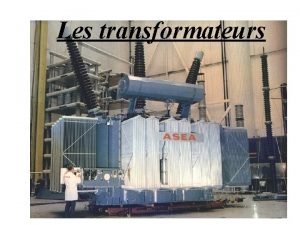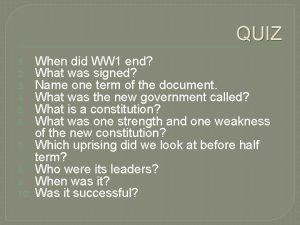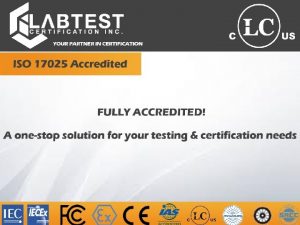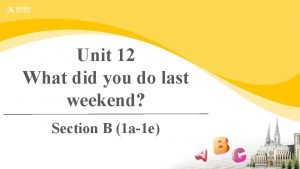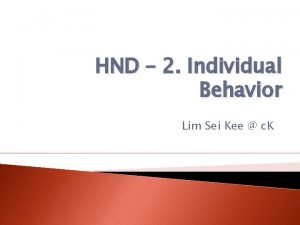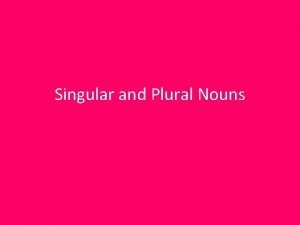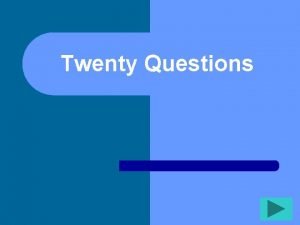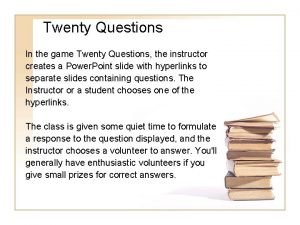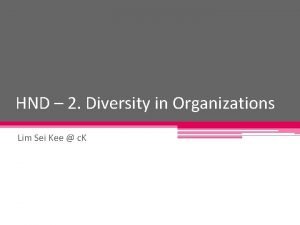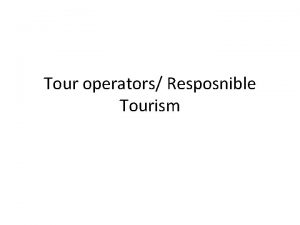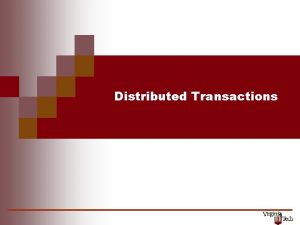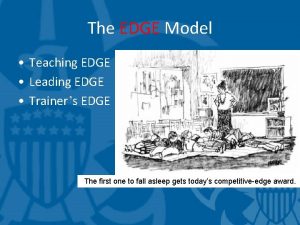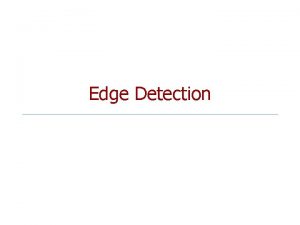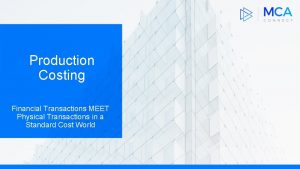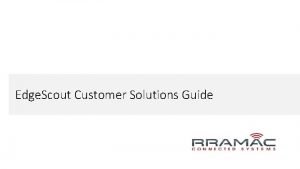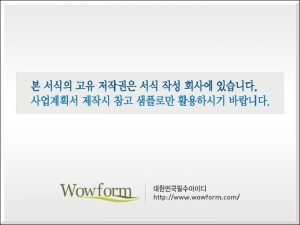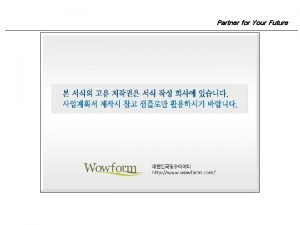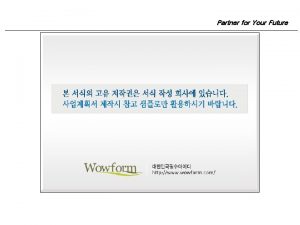KAPP EDGE SOLUTIONS Your Knowledge Partner FINANCIAL TRANSACTIONS


















- Slides: 18

KAPP EDGE SOLUTIONS Your Knowledge Partner

FINANCIAL TRANSACTIONS AND FRAUD SCHEMES Accounting Concepts

Accounting Equation § Assets= Liability + Capital § Both sides are always equal ©KAPP Edge Solutions Pvt. Ltd.

Accounting Steps 1. Journal Entry 2. Ledgers 3. Trial Balance 4. Final Accounts ( Financial Statements)- Income statement, Balance Sheet and Cash flow Statement ©KAPP Edge Solutions Pvt. Ltd.

Financial Statement It includes § Income statements- P& L account § Statement of financial Position –Balance sheet § Statement of cash flow ©KAPP Edge Solutions Pvt. Ltd.

Users of Financial Statements § Investors (Both existing and potential ) § Lenders (Both existing and potential) § Employee (Both existing and potential and past) § Analysts/ advisors § Business contact group: ü Customers ü Suppliers § Government § Public ©KAPP Edge Solutions Pvt. Ltd.

Components of Final Accounts § Following are the components of final accounts business carrying on trading activities: § § § (i) Income statement : It is divided into two parts: (a) Trading Account which shows the gross profit or gross loss; (b) Profit and Loss Account which shows the net profit or net loss; and (ii) Balance Sheet. ©KAPP Edge Solutions Pvt. Ltd.

Trading account § Trading account is prepared for ascertaining the overall result of trading i. e. buying and selling of goods. § It is prepared to show the result of buying and selling of goods. § Hence, Trading account is an account which is prepared to find out the Gross Profit or Gross Loss of a certain accounting period. § The formula for G. P is: § Gross Profit = Sales – Cost of goods sold (COGS) COGS = Opening Stock + Purchases + all direct expanses – Closing Stock. ©KAPP Edge Solutions Pvt. Ltd.

Profit and loss Account § Profit and Loss Account is a part of Income Statement. In this account, all indirect expenses such as administrative, selling, distribution and non-operating expenses are charged with the total of gross profit/gross loss and non-operating income in order to ascertain the Net Profit/Net Loss of the business. § It starts with the amount of gross profit or gross loss brought down from the Trading Account. As such, all those expenses and losses which have not been debited to the Trading Account will now be debited to Profit & Loss Account. These expenses include administrative expenses, selling expenses, distribution expenses etc. These are called ‘Indirect Expenses’. ©KAPP Edge Solutions Pvt. Ltd.

Balance Sheet § The balance sheet has two sides – Assets side and the Liabilities side. § Assets are shown on the right hand side and the liabilities are shown on the left hand side of the Balance Sheet. (in traditional way, its changed now) § The balance sheet is based on the equation that what an entity owns on a given date must be equal to what it owes on that date. § The total of both sides of the balance sheet i. e. assets side and the liabilities side, will always be equal. § As this statement shows the position of assets and liabilities of an entity on a particular date, it is also known as ‘Position Statement’. The definition of Balance Sheet as given by some authors are as follows ©KAPP Edge Solutions Pvt. Ltd.

Liabilities Classification q. Current Liabilities : which needs to be repaid within 12 months. q. Non current liabilities- which needs to be repaid after 12 months. q. Stockholder’s Equity: § Capital § Reserves and Surplus ©KAPP Edge Solutions Pvt. Ltd.

Assets Classification q. Current Assets-Assets which can be converted into cash within 12 months. q. Non-current Assets-Assets which are for long term use. ©KAPP Edge Solutions Pvt. Ltd.

Assets Current Asset • • • Inventory Receivables Cash Bank Prepaid Expenses Accrued Income Non –Current Assets • • Plan and machinery Land Building Office equipment ©KAPP Edge Solutions Pvt. Ltd.

Liabilities Current Liabilities • Payable • Bank loan • Bank overdraft Non –Current liabilities • Long term loan • Bonds Payable ©KAPP Edge Solutions Pvt. Ltd.

Balance Sheet Format ©KAPP Edge Solutions Pvt. Ltd.

Cost of Goods Sold § Cost of goods sold § =Opening inventory + purchases- closing stock ©KAPP Edge Solutions Pvt. Ltd.

Capital and Revenue § Capital Transactions- those transactions that affects the organization in the long run. § Capital expenditure-expenses on non- current assets. § Capital Receipts-disposal of non- current assets. § Revenue Transactions- those transactions that affects the current period. § Revenue expenditure-expenses on items that are consumed in the period. § Revenue Receipts-comes from sales. ©KAPP Edge Solutions Pvt. Ltd.

Thank You KAPP Edge Solutions ©KAPP Edge Solutions Pvt. Ltd.
 Diagramme de kapp
Diagramme de kapp Nick kapp
Nick kapp Antonio kapp
Antonio kapp Wolfang kapp
Wolfang kapp Kuwait authority for partnership projects
Kuwait authority for partnership projects Rising edge and falling edge
Rising edge and falling edge Stop testing your partner
Stop testing your partner Discuss the following questions with a partner.
Discuss the following questions with a partner. Your partner is a reflection of you
Your partner is a reflection of you Discuss the following questions with your partner
Discuss the following questions with your partner So what did you do last saturday
So what did you do last saturday Your romantic partner always uses the same shampoo
Your romantic partner always uses the same shampoo Your reliable partner slogan
Your reliable partner slogan Standart plural
Standart plural Choose your partner carefully
Choose your partner carefully How to play 20 questions
How to play 20 questions 20 questions
20 questions Your romantic partner always uses the same shampoo
Your romantic partner always uses the same shampoo Discuss these questions with your partner
Discuss these questions with your partner
